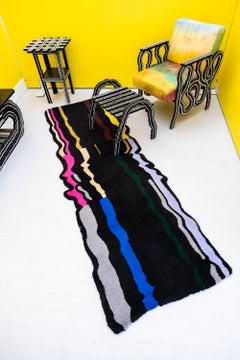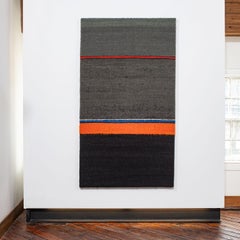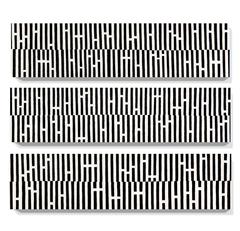Jason Andrew Turner More Art
Jason Andrew Turner (b. 1982, Birmingham, AL) is a visual artist currently based in rural North Carolina. In these newest works, he begins with an armature of sumi ink, laying a thread of black ink as a pathway. Color is applied along the linear architecture relating to the emotional and cultural refection of color meaning. This slows the immediate path to create a narrative that is both reflective and a reaction to society at large. The configurations are often repeated gestures that relate with behavioral actions, emotional states, anxiety, and symbiotic community. Jason holds a BFA from Savannah College of Art and Design.
21st Century and Contemporary Contemporary Jason Andrew Turner More Art
Wool
2010s Contemporary Jason Andrew Turner More Art
Wire
1990s Contemporary Jason Andrew Turner More Art
Fabric, Textile, Tapestry, Wool
Mariette Rousseau-VermetteCoup de Grace by Mariette Rousseau-Vermette, Abstract Woven Tapestry, 1997
2010s Contemporary Jason Andrew Turner More Art
Wool, Thread, Plastic, Wood
21st Century and Contemporary Contemporary Jason Andrew Turner More Art
Wool, Plaster
21st Century and Contemporary Contemporary Jason Andrew Turner More Art
Wool
2010s Contemporary Jason Andrew Turner More Art
Metal
1980s Contemporary Jason Andrew Turner More Art
Wool
Early 2000s Contemporary Jason Andrew Turner More Art
Fabric, Textile, Tapestry, Wool, Cotton, Linen
2010s Contemporary Jason Andrew Turner More Art
Metal
2010s Contemporary Jason Andrew Turner More Art
Metal
21st Century and Contemporary Contemporary Jason Andrew Turner More Art
Wool, Plaster
2010s Contemporary Jason Andrew Turner More Art
Steel
21st Century and Contemporary Abstract Jason Andrew Turner More Art
Acrylic, Panel


